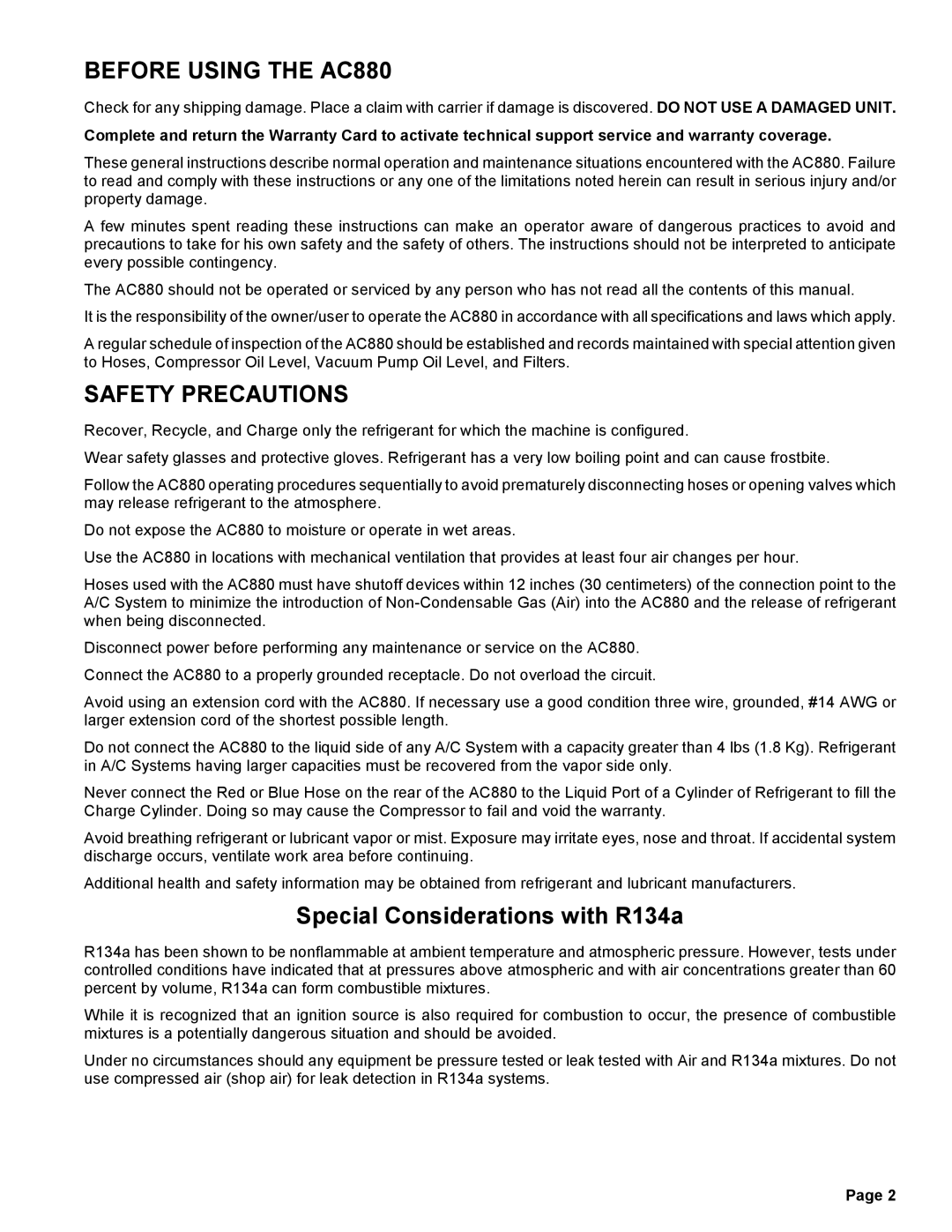AC880 specifications
The Sharp AC880 is a state-of-the-art air conditioning unit designed to provide optimal comfort in residential and small commercial spaces. With its sleek and modern design, it not only enhances the aesthetic appeal of any room but also incorporates advanced technologies to ensure efficient cooling and heating performance.One of the standout features of the Sharp AC880 is its powerful cooling capability. Equipped with a high-efficiency compressor, this unit can quickly lower the room temperature, making it ideal for hot summer days. Additionally, its energy-efficient design helps reduce electricity consumption, making it an eco-friendly choice for consumers. The AC880 boasts an impressive EER (Energy Efficiency Ratio), ensuring that users receive the best cooling output for their energy investment.
The AC880 is also equipped with Sharp's patented Plasmacluster Technology, which utilizes positive and negative ions to neutralize airborne pollutants, allergens, and odors. This advanced filtration system not only purifies the air, enhancing indoor air quality, but also contributes to a healthier living environment. The Plasmacluster technology works quietly in the background, providing added comfort without disturbing your daily activities.
For added convenience, the Sharp AC880 features a user-friendly remote control that allows you to adjust temperature settings, fan speeds, and mode selections from across the room. The intuitive control panel can also be accessed directly on the unit, offering multiple options to customize your comfort level. The programmable timer function allows users to set the unit to turn on or off at specific times, reducing energy waste and ensuring that your space is always at the desired temperature when you return home.
Another significant characteristic of the AC880 is its quiet operation. Designed for low noise levels, this air conditioner ensures that you can enjoy a cool environment without the distraction of loud machinery. This makes it ideal for bedrooms and workplaces, where a peaceful atmosphere is essential.
In summary, the Sharp AC880 is a versatile air conditioning unit that combines efficiency, advanced technology, and user-friendly features. With its powerful cooling, air purification technology, and smart controls, it stands out as a top choice for anyone looking to enhance their indoor comfort. Whether you are dealing with sweltering heat or chilly evenings, the Sharp AC880 is a reliable solution that meets modern cooling needs while prioritizing environmental sustainability and user comfort.
